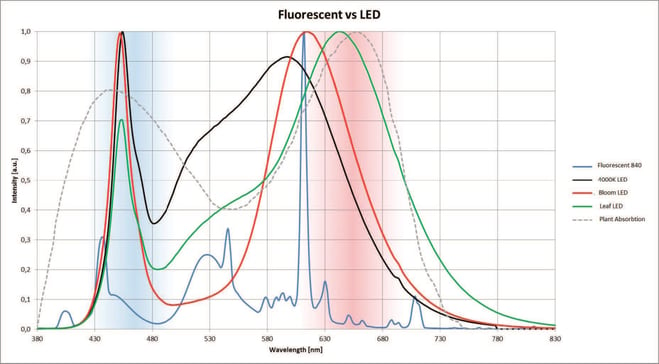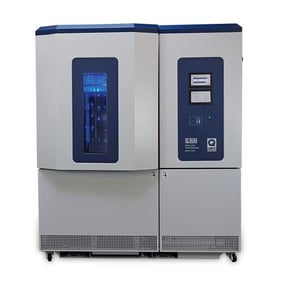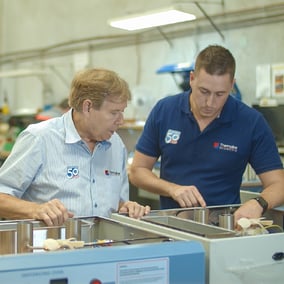
LED (Light Emitting Diode) growth lights have gained popularity in research and agriculture for their ability to provide specific wavelengths of light that can optimise plant growth. These lights are used in various research applications, including plant physiology, horticulture, and controlled environment agriculture. Thermoline has been using Vossloh-Schwabe LED lighting in all of its plant growth cabinets for a number of years and can offer custom mixed light trays.
Here are some key aspects of using LED growth lights in research:
Spectral Control: LED growth lights can emit light in specific wavelengths, allowing researchers to tailor the light spectrum to meet the needs of different plants at various growth stages. This spectral control can influence factors like flowering, fruiting, and overall plant development. This can be achieved in a number of ways.
- You can add LED lights of a particular spectral output to an existing system using fluorescent and/or HID lights.
- You can build a light tray from LED lights of known spectral outputs in a particular ratio.
- You can use dimming on particular LEDs to control the final light output spectrum (this gives the most customisable output).
Directional Lighting: One of the advantages of using LED lights is that they have a directional output. This means that, unlike other types of lights, you don't waste energy having light going in all directions. This is also a big advantage when using a multilevel light set-up (the light from the shelf below doesn't interfere with the shelf of samples above).
Consistent spectrum and output: LED lights have a consistent spectrum even when dimmed. LED lights also have a more stable output when the temperature drops. These two factors are important as most plant growth chambers run on a temperature cycle, and keeping the spectrum and intensity the same is critical to good research.
Energy Efficiency: LEDs are energy-efficient, producing less heat than traditional lighting sources like high-pressure sodium (HPS) or metal halide (MH) lamps. This energy efficiency reduces electricity costs and minimises the risk of heat damage to plants in controlled environments.
Customisation: Researchers can design LED light systems to provide the precise light spectrum needed for their experiments. This customisation allows for the optimisation of growth conditions for specific plant species or research goals.
Minimal Heat Production: Unlike some other lighting sources, LED growth lights produce very little heat. This means that they can be placed closer to the plants without risking heat stress, and they don't require extensive cooling systems in controlled environments.
Reduced Maintenance: LED lights, with their longer lifespan, require less frequent replacement compared to other light sources. This results in lower maintenance costs in research facilities.
Research Applications: LED growth lights are used in a wide range of research applications, including studying plant responses to different light spectra, optimising growth conditions for medicinal plants, improving crop yields in indoor farming, and conducting experiments related to photomorphogenesis, photoperiodism, and other plant responses to light.
Remote Control and Automation: Some LED growth lights can be controlled remotely, allowing researchers to fine-tune light settings, intensity, and duration without needing physical access to the light fixtures. Automation can be useful for conducting experiments and maintaining precise growth conditions.
Plant Tissue Culture: LED growth lights are also used in plant tissue culture and micropropagation, where precise control of lighting conditions is essential for the successful growth of plant tissue or explants.
Data Collection: Researchers often integrate LED growth lights with sensors and data collection systems to monitor and record plant growth, light conditions, and other relevant parameters. This data can help in analysing the effects of different light spectra on plant development.
Sustainable and Environmentally Friendly: LED lights are considered more environmentally friendly due to their reduced energy consumption and longer lifespan, making them a sustainable choice for research and agricultural applications.
LED growth lights have revolutionised how researchers study plant growth and have significantly contributed to the development of controlled environment agriculture, vertical farming, and greenhouse technology. Their flexibility, energy efficiency, and customisable spectra make them a valuable tool in plant science research.
The Thermoline sales and engineering team will be happy to help you with any questions.






